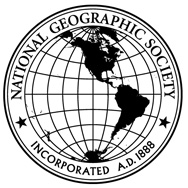
This weekend I attended the National Geographic Travel Photography Seminar hosted at the National Geographic Society HQ in Washington, DC. Here’s a few brief notes, as well as resources discussed during the all day seminar.
Presenters:
Photography Equipment
- What’s in Catherine’s Bag?
- As little as possible
- Tripod
- Canon 5D mk2
- 24-70 f/2.8 L lens
- 16-35 Lens
- 24-105 Lens (<<< WHY Would you go with the 24-105 instead of 70-200?)
- Flash – 580EX2
- Lite Disk – Soft gold
- Cable release
- Graduated ND Filters and holder – (<<<Why a graduated ND filder, why not a variable whole ND filter and photoshop?)
- Polarizer
- 8GB CF Cards x 4, in a holder
- Magnifying glass to see the back of the screen
- What’s in Aaron’s bag
- EWA marine bag – waterproof camera bag
- 70-200mm Lens
- 16-35mm lens
- 85 or 135mm portrait lens
- 50mm lens
- Camera – 5dMK2 w/ 35mm prime lens
- Shotgun mic for film
- ND Filder (<<<WHY a graduated ND filter?)
- Sound Recorder for recording ambiance
- Headlamp
- Off camera flash cord
- 2 Batteries with 2 battery chargers
- Adjustable ND filter
- Alarm clock
- Advil
- Memory Cards (how many cards?)
- Flash
- Newswear hip bags>>
- Tools and tricks for better pictures
- Wide Angle Lens
- Sometimes used out of necessity
- Get in the entire scene – mostly shooting with the 16-35mm lens
- Dramatize space – smash lines into alignment – dramatic effect
- Telephoto Lens
- Used to crush space – compress DOF
- Prime lenses
- Super fast, able to pull ambient light out of the sky
- Good for shooting time of day when the manmade light matches the light leves in the sky
- Details
- Important to complete a story – pull people into the details of life
- Hands is a go-to for details
- Stay loose, break some rules
- Proximity
- Patterns
- Repetition of objects, big open spaces, leave space in the frame
- Creative Framing
- Where are you when you’re making these pictures?
- Not about just waiting for the right things to happen, but putting yourself in the right position
- Releases
- Photos for an editorial story do not need releases
- Wide Angle Lens
- Making Great Pictures – Catherine
- Looking for Light
- Trying to create mood and feeling with the lighting in the photo
- Elements of Composition
- Details details details
- Action and Mobitoon
- Moments and gestures
- Put people in
- Get on board
- Looking for Light
- Immersion Photography
- Photographing outside your comfort zone
- Photographing People
- Come into a situation giving off a positive attitude and feeling
- Let people connect with you as a photographer
- Get to know a little of the local language, and know positive words
- “Who would suggest I photograph in order to properly capture” (fundamental technique in handling people)
